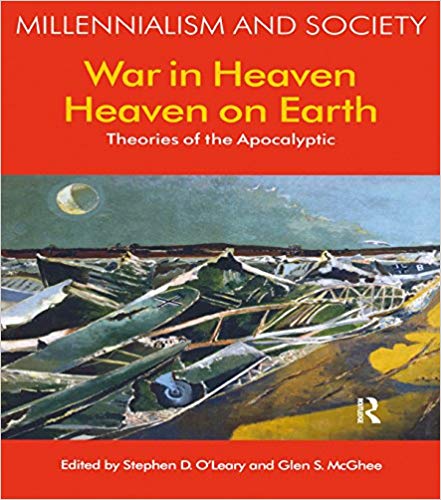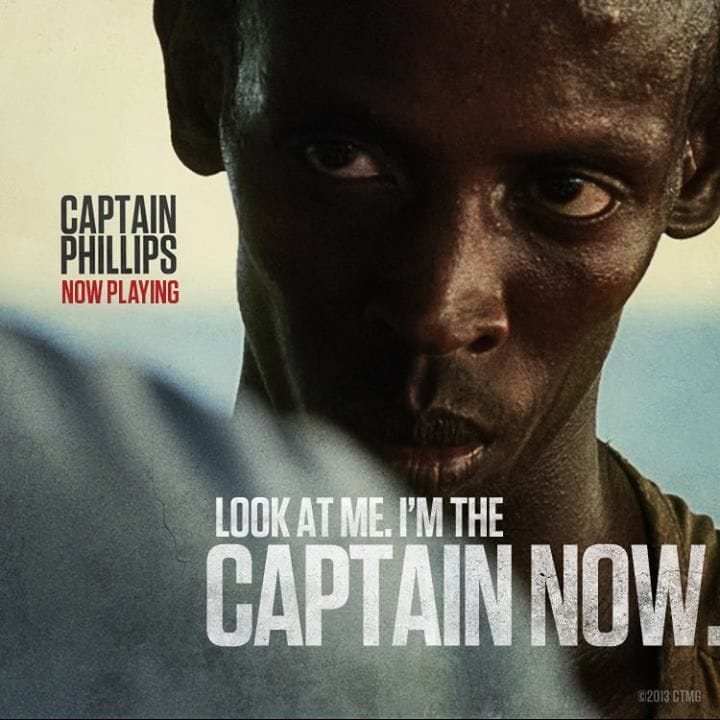The Long View: War in Heaven/Heaven on Earth

If I could find a reasonably-priced copy of this book, something like the proceedings of the annual meeting of the Center for Millennial Studies at Boston University, I might pick it up. I’m sufficiently intrigued by John’s précis that I want to read all the contributions. I’m also curious whether the Damian Thompson listed is the current editor-in-chief of The Catholic Herald. I suspect so, but a quick internet search didn’t turn up the article in question.
John provides links to his contributions to the Center for Millennial Studies conference.
Each one is well worth a read, and they can function as a useful summary of John’s thinking on the subject of millennialism at the close of modernity.
War in Heaven/Heaven on Earth
Theories of the Apocalyptic
Edited by Stephen O’Leary and Glen S. McGhee
Equinox Publishing, 2005
290 Pages, US$26.95
ISBN 1-90476-888-1
Millennialism is not a new subject. Casual readers are likely to have encountered the topic in such books as Norman Cohn’s classic (if dated) study of early modern millennial “revolutions,” The Pursuit of the Millennium, or Leon Festinger’s application of Gestalt theory to the evolution and breakup of a flying-saucer cult, When Prophecy Fails. Considered most broadly as the expectation of an imminent, collective, terrestrial, and total transformation of the world for the better, millennialism has long interested not just theologians and anthropologists, but also social scientists, experimental psychologists, literary theorists, and political scientists. In the 1990s, scholars in various disciplines prepared to observe what was expected to be an outbreak of millennialist activity in and around the year 2000. One of the chief venues for discussing the results of this activity was the Center for Millennial Studies at Boston University, which held international conferences from 1996-2002. War in Heaven/Heaven on Earth is one of three anthologies in the Center’s “Millennialism and Society” series, which contains papers by the Center’s members.
The writer of this review was also a member of the Center. None of the papers I presented at the annual conferences appears in this volume. One is here; another is here; the last is here.
The Center and its conferences provided unexampled opportunities for scholars who otherwise would have had little occasion to encounter each other professionally to discuss their own findings and theoretical models. The result was not quite a general theory of millennialism, but the definition of a set of important methodological and substantive issues. One thing the Center did not provide, however, was a forum for discussing contemporary millennialist outbreaks, since, for the most part, they did not occur. In the 1990s, of course, there were some mass suicides by apocalyptic cults, and attendant to the year 2000 itself there was an extraordinary (and expensive) wave of anxiety about the ability of the world’s computer systems to handle the date change. However, the social reaction to the millennium was not what the members of the Center had anticipated.
In this anthology, Damian Thompson suggests in his contribution, “The Retreat of the Millennium,” that classic revolutionary millennialism may no longer be possible in the developed world. Millennial and apocalyptic idea systems are if anything more easily available than they have ever been, but as entertainment. The “structures of plausibility,” which is to say, the social networks that turn ideas into movements, are so transparent to modern mass communication that self-reinforcing communities of the elect cannot form. To me this seems improbable. Modern communications are quite capable of facilitating the organization of new movements. Often these are movements with apocalyptic premises, though in the West itself these ideas are more likely to have a scientific or pseudoscientific basis. In this anthology, David Redles’s contribution, “‘The time is not far off…’: The Millennial Reich and the Induced Apocalypse,” we see that the Nazi movement in Germany was in many ways a millennialist movement, one that seemed quite consistent with modern conditions, indeed with modern conditions when the only media were the mass media, which one would think would favor consensus rather than cultic views.
One of the dangers of millennial studies is the temptation to expand the concept excessively. Still, one of the great merits of this book is the range of phenomena that the authors usefully treat as millennial. Marc Fonda, for instance, in “Postmodernity and the Imagination of the Apocalypse,” suggests that postmdernism is implicitly an apocalyptic mindset. It does exactly what millennial ideologies do: it “sees through” consensus reality and unmasks it as a fraud; it is at war with the recent past; and it makes its adherents profoundly uneasy. Implicit in every work of deconstruction is the desire for a new synthesis. Postmodernism is a transitional frame of mind that hopes for its own supercession by a new age. That insight chimes very neatly with Joel Martin’s “Before and Beyond the Sioux Ghost Dance,” which develops the idea that millennial movements resemble “rites of passage,” but for collectivities rather than individuals.
The anthology does not neglect millennial movements in the narrow sense. There is Rosalind Hackett’s assessment of the relatively recent Maitasine uprising in northern Nigeria. The movement in question was of doubtful Islamic provenance, (its founder called Mohammed “just another Arab”), but it set the pattern for Christian-Muslim confessional strife unto this day. A real surprise for many readers will be David Cook’s “The Beginnings of Islam as an Apocalyptic Movement,” which looks back to a time when it was not clear that Islam was not just another exotic Christian sect. In any case, the piece argues that early Islam was able to expand as quickly as it did because of its ability to harmonize with the millennial expectations of the Christian communities in the regions it conquered.
A recurrent issue in the study of any millennial movement is how it reacts when events seem to cast its historical scenario in doubt, or even plainly refutes it. This issue goes to the fate of modernity, or so says John Turner in “The Deflating power of Progress,” which argues from a Nietzschean perspective that even the faith in modern science is a millennial ideology that cannot be sustained indefinitely. As Cathy Gutierrez explains in “The Millennium and Narrative Closure,” millennial movements construct history in a novelistic fashion, so that the end gives meaning to all the preceding events. The millennial models are different, however, in that they must always defer closure, or risk disconfirmation. Glen McGhee’s critical piece, “A Cultural History of Dissonance Theory,” observes that Leon Festinger’s concept of “cognitive dissonance” has held up rather well to empirical study, but not his claim that millennial groups commonly react to evidence contrary to their beliefs by proselytizing. (That piece also does an almost perfect back flip by showing how the development of dissonance theory actually resembled the evolution and dissolution of many of the millennial groups it was designed to explain.)
Albert Baumgarten’s “Four Stages in the Life of a Millennial Movement” shows how millennialist groups often survive their earlier histories as active apocalyptic movements to be come stable social institutions. They may maintain their millennialist ideas in some form, but interpret and background them in a way that makes ordinary life possible again. This is also a key point in “Roosters Crow, Owls Hoot,” the contribution by the Center for Millennial Studies cofounder, Richard Landes. Millennial ideas are often a part of the social environment; their influence depends on the success or failure of the proponents and opponents of an apocalyptic interpretation of current events. Ted Daniels actually begins this anthology with a discussion of the role of prophets and the conversion experience in sparking millennialist movements. “A Cups Catastrophe Model of Cult Conversions,” by Leslie Downing, applies a Gestalt model to the process of sudden conversion.
The end of the world disappointed many of the participants in millennial studies in the year 2000. In retrospect, that seems to have occurred not because the subject lacked value, but because of a failure to imagine the ways in which millennially motivated behavior would manifest itself in the 21st century. I would argue that the final contribution to the book, Charles Strozier’s “From Ground Zero: Thoughts on Apocalyptic Violence and the New Terrorism,” errs on the side of being too metaphorical. The War on Terror and the Clash of Civilizations have more than incidental apocalyptic elements. We ignore them at our peril.
Copyright © 2006 by John J. Reilly
Support the Long View re-posting project by downloading Brave browser. With Both Hands is a verified Brave publisher, you can leave me a tip too!




Comments ()